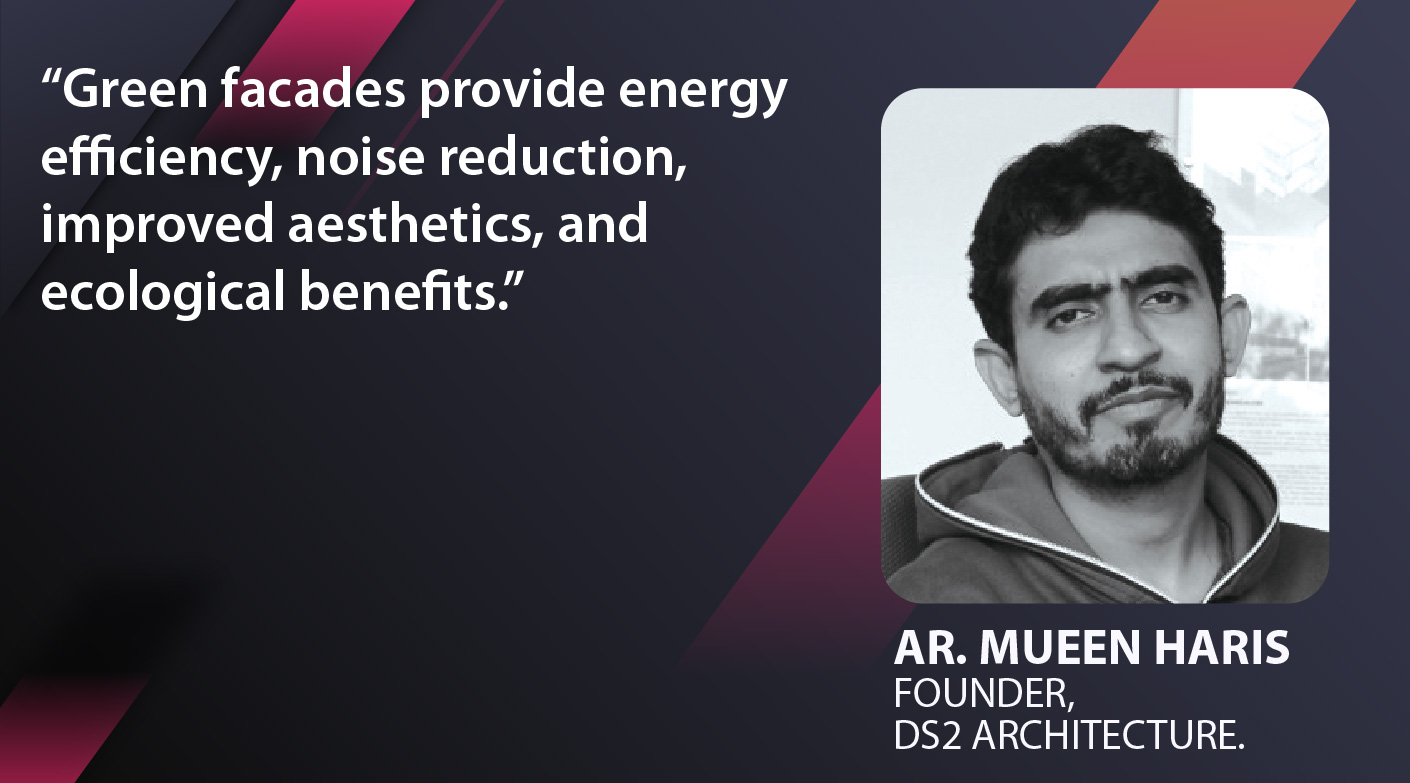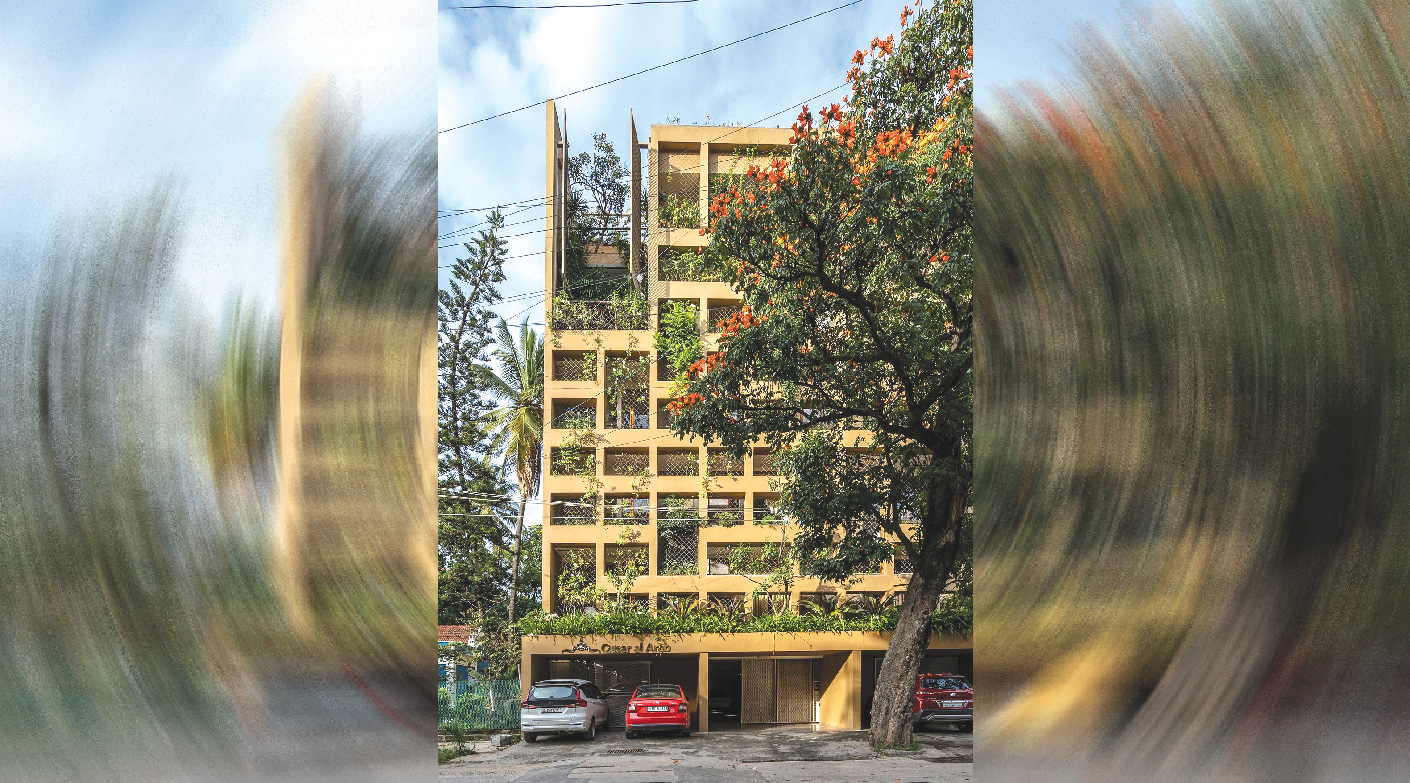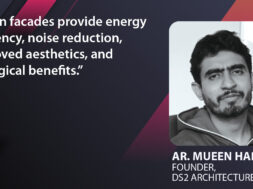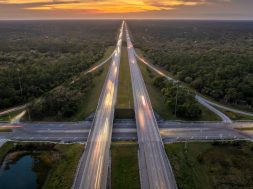Transforming buildings with aesthetic and green facades

Ar. Mueen Haris, Founder of Ds2 Architecture, discusses the impact of green facades on the environment and the observed positive outcomes.
Emerging trends and innovations in green facades
Green facades have evolved as contemporary design components that enhance aesthetics, sustainability, and functional performance in recent decades. These facades are highly sought-after today due to their numerous benefits. Apart from their visually pleasing appearance, green facades contribute to energy efficiency by reducing air conditioning needs through the cooling effect of plants. Moreover, they help to reduce air and noise pollution, creating a more pleasant environment.
Benefits of incorporating green facades
Incorporating green facades into building designs yields multiple benefits for the environment and human well-being. Green facades provide shade and insulation, resulting in reduced energy demands. They act as natural air filters, improving acoustics and reducing pollution. Additionally, green facades offer ecological advantages such as enhancing urban biodiversity and reducing carbon dioxide emissions.
Contributions to energy efficiency and thermal comfort
Green plants and climbers on building facades play a crucial role in achieving energy efficiency and enhancing thermal comfort. By absorbing heat, these green elements help maintain a cooler temperature inside the building, thus providing thermal insulation. Furthermore, the plants reduce the release of infrared radiation into the environment, reducing the energy required for cooling and heating, ultimately resulting in lower energy costs.

Key considerations in designing and installing green facades
Designing and installing a green facade requires careful consideration of various factors. The building’s height, size, aspect, and surrounding structures, including shadows and reflections, must be considered. Wind forces also play a significant role. Planning and implementing a suitable growing medium for the green wall is crucial. The climate influences the selection of appropriate plants and climbers, considering their growth height, sunlight requirements, tolerance for heights and winds, and drainage, irrigation, and maintenance needs. Drip irrigation is typically used to water green walls with hydroponic irrigation systems.
Successful implementations and positive outcomes
One exemplary project successfully implementing green facades is the Davis Road Apartment in Bangalore, designed by Ds2 Architecture. This building exemplifies the seamless integration of aesthetics, functionality, cultural context, and construction nuances. The green facade serves multiple purposes, including addressing security concerns within the building’s immediate context. As the creepers grow, they provide shade, reduce direct light and heat, and eliminate the need for internal curtains.
for more info visit : https://www.ds2.in/
Cookie Consent
We use cookies to personalize your experience. By continuing to visit this website you agree to our Terms & Conditions, Privacy Policy and Cookie Policy.










